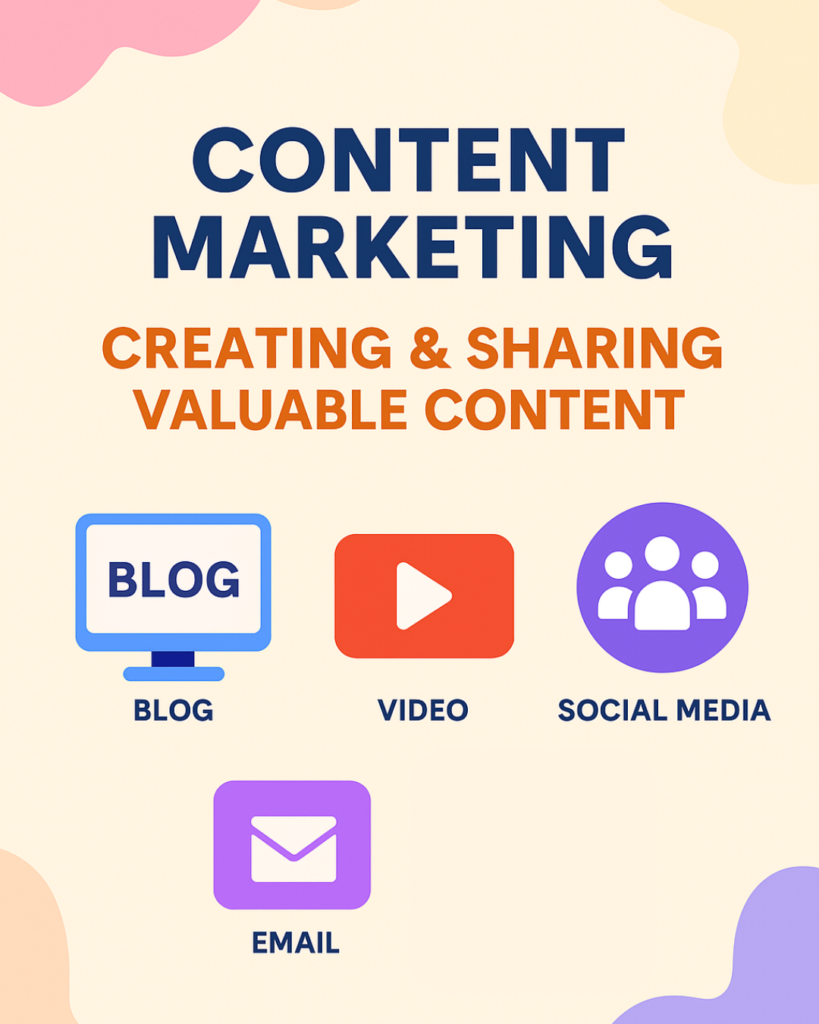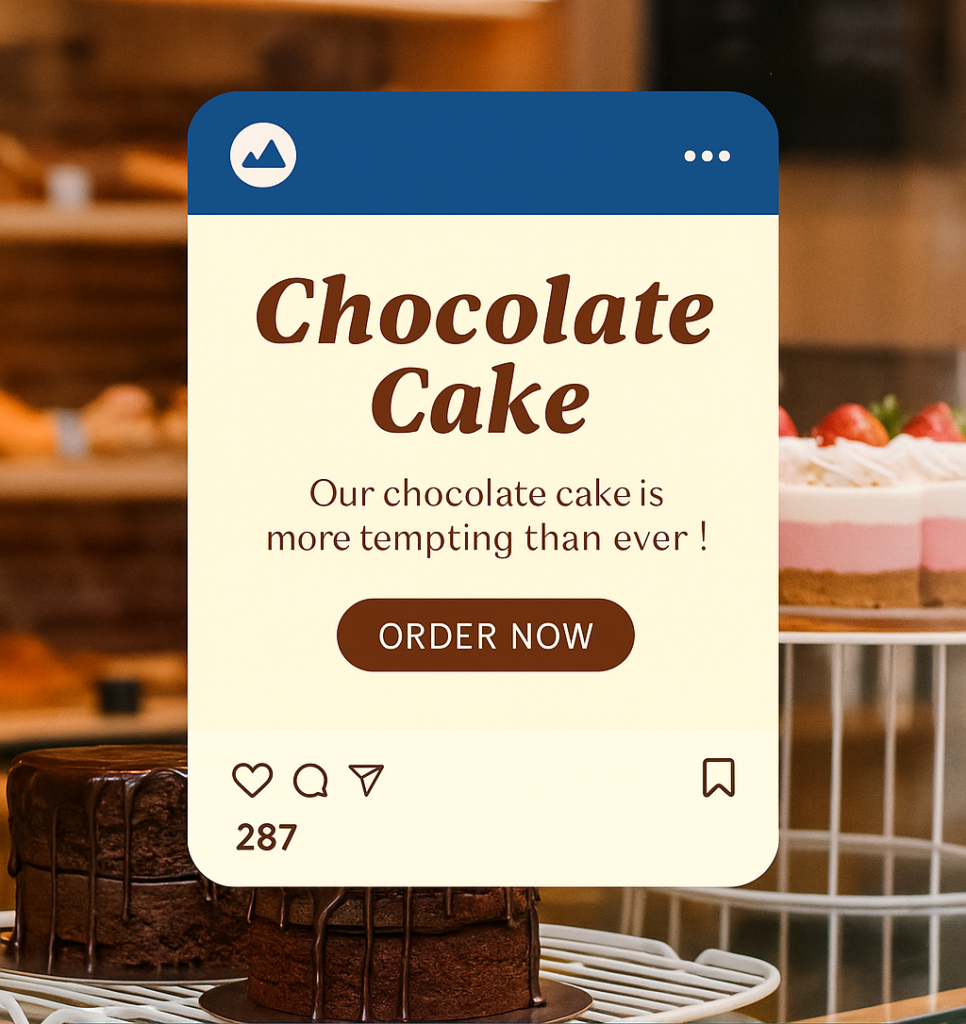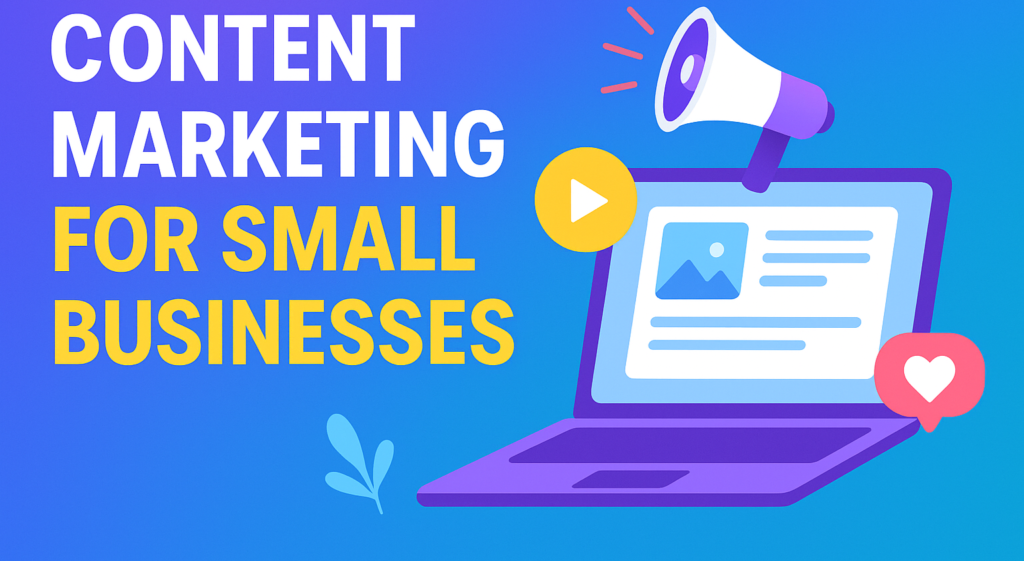Introduction
Running a small business is exciting — but let’s be honest, it’s also challenging. You often have limited time, limited budget, and limited resources. Meanwhile, your competitors (sometimes much bigger ones) are pouring lakhs of rupees into advertising.
So how can a small business like yours stand out?
👉 The answer is content marketing.
Unlike traditional ads, content marketing allows you to attract customers naturally by sharing content that educates, entertains, or solves their problems. Instead of chasing customers, you let them come to you.
In this beginner’s guide, you’ll learn:
- What content marketing really means.
- Step-by-step instructions to create your own strategy.
- Affordable content ideas that even a solo business owner can try.
- Real examples of how small businesses benefit from content marketing.
By the end, you’ll be ready to use content marketing to grow your small business in 2025 and beyond.
What is Content Marketing?

Content marketing is the practice of creating and sharing useful, valuable, and engaging content that attracts and retains your ideal customers.
It’s not about spamming “Buy now!” messages. It’s about building trust so that when people need your product or service, you are the first brand they remember.
Examples of Content Marketing
- A bakery posts a recipe blog on “How to Bake Chocolate Muffins at Home.”
- A salon shares an Instagram Reel: “5-Minute Hairstyles for Office Women.”
- A financial advisor creates an infographic: “5 Mistakes to Avoid in Tax Planning.”
In all these cases, the businesses are not directly selling — instead, they are helping their audience. That helpfulness builds trust, and trust builds sales.
👉 According to HubSpot, businesses that publish blogs generate 67% more leads than those that don’t.
Difference Between Ads and Content Marketing
| Aspect | Ads (Advertising) | Content Marketing |
|---|---|---|
| Approach | Direct promotion of products/services | Indirect promotion through valuable, helpful content |
| Goal | Immediate sales or leads | Long-term trust, relationships, and brand authority |
| Lifespan | Works only while you keep paying | Keeps bringing results for months/years after publishing |
| Cost | Requires continuous spending (budget ends → ads stop) | More affordable, scalable with effort and creativity |
| Audience Perception | Often seen as interruptive or “pushy” | Seen as helpful, educational, and trust-building |
How to Start Your Content Marketing Strategy (Step-by-Step)
Starting feels overwhelming, but if you follow these steps, it becomes simple and doable.
Step 1: Know Your Audience
You cannot create good content without knowing who you’re creating it for.
Ask yourself:
- Who are my ideal customers?
- What problems do they face daily?
- What questions do they type on Google?
👉 Example:
- A bakery → families and young professionals looking for cakes.
- A salon → working women needing quick beauty solutions.
- A financial advisor → small business owners who want tax-saving tips.
💡 Tool Tip: Use AnswerThePublic or Google Keyword Planner to discover exactly what your audience is searching for.
Step 2: Set Clear Goals
What do you want to achieve with content marketing?
- More website traffic?
- More Instagram followers?
- More leads for your services?
👉 Example:
- Bakery → goal = increase local walk-ins.
- Salon → goal = attract Instagram followers.
- Financial services → goal = generate leads via blogs.
Clear goals prevent you from wasting time posting random content.
Step 3: Pick the Right Platforms
Don’t try to be everywhere — focus on where your customers are.
- Instagram & Facebook → best for lifestyle businesses like bakeries, salons, boutiques.
- LinkedIn → perfect for professional services like financial advisors or coaches.
- YouTube → great for tutorials, demos, and storytelling.
- Blogs (Website) → the best long-term strategy for SEO and free leads.
👉 If you’re new to blogging, check my guide:
📖 Small Business Success: How to Build a Strong Online Presence in 8 Steps
Step 4: Create a Content Plan (Calendar)
Consistency beats perfection. Plan at least 1 month in advance.
- Blogs → 2–4 per month.
- Social media → 3–4 posts per week.
- Reels/videos → 1–2 per week.
- Emails → 2 per month.
👉 Example content calendar for a bakery:
- Week 1 → Blog: “Top 5 Cakes for Birthday Parties.”
- Week 2 → Instagram Reel: Cake Decorating.
- Week 3 → Blog: “Why Homemade Bread is Healthier.”
- Week 4 → Reel: “Behind the Scenes in Our Kitchen.”
Step 5: Create Quality Content
You don’t need to hire expensive designers. Use free/affordable tools like:
- Canva → posters, social media graphics, infographics.
- CapCut/InShot → short-form videos.
- Grammarly → check spelling and grammar.
👉 Pro Tip: Instead of aiming for perfect design, focus on clarity + consistency.
Step 6: Promote Your Content
Creating content is step 1, but promoting it is equally important.
Ways to promote:
- Share across all social platforms.
- Send in WhatsApp groups.
- Add to your email newsletter.
- Collaborate with micro-influencers in your niche.
Step 7: Track and Improve
Use analytics to check what’s working:
- Blogs → Google Analytics.
- Instagram → built-in Insights.
- YouTube → Analytics dashboard.
👉 Example: If Instagram Reels perform better than static posts, double down on Reels.
Types of Content Marketing

Here are the most effective types of content for small businesses:
- Blogs – SEO + educational (ex: “10 Social Media Tips for Small Businesses”).
- Social Media Posts – Visual, short, engaging.
- Videos – Tutorials, testimonials, behind-the-scenes.
- Emails – Build customer relationships directly.
- Infographics – Easy-to-share content.
- Case Studies – Proof of your success.
👉 To learn about advanced digital marketing strategies, check my blog:
📖 Proven Digital Marketing Strategies to Help Small Businesses Grow in 2025
Benefits of Content Marketing
Here’s why content marketing is perfect for small businesses:
- ✅ Builds trust and authority.
- ✅ Brings organic traffic from search engines.
- ✅ Generates leads without constant ad spend.
- ✅ Strengthens customer loyalty.
- ✅ Saves money (affordable marketing).
👉 Demand Metric found that content marketing costs 62% less than traditional ads but generates 3x more leads.
Affordable Content Ideas for Small Businesses

Even with zero budget, you can create valuable content:
- “How-to” blogs or videos.
- Customer testimonials.
- Before-and-after transformations.
- Quick tips series.
- Behind-the-scenes posts.
- Free templates or checklists.
👉 Example:
- A financial advisor can share a free budgeting template.
- A bakery can share easy recipes.
- A salon can share “10-minute skincare hacks.”
Case Study: How a Small Bakery Used Content Marketing

Aru Bakery Shop started with three types of content:
- Blog → “5 Easy Cakes to Bake at Home.”
- Instagram Reel → Chocolate cake decorating timelapse.
- Email Newsletter → “20% Off on Weekend Cakes.”
Results after 3 months:
- +500 Instagram followers.
- +30% increase in local footfall.
- Repeat customers through email promotions.
👉 Lesson: Even a small, local business can achieve measurable growth through consistent content.
Common Mistakes to Avoid
- Posting inconsistently.
- Copying competitors instead of being original.
- Over-selling instead of providing value.
- Ignoring SEO.
- Not tracking results.
👉 To avoid these pitfalls, also read:
📖 Small Business Success: Mastering Social Media Marketing in 2025
FAQs About Content Marketing
Q1. Do I need a blog for content marketing?
Not always, but blogs are excellent for SEO and long-term results.
Q2. How long before I see results?
SEO results take 3–6 months, while social media may bring results faster.
Q3. Is content marketing expensive?
No. With free tools like Canva and Google Docs, you can start at zero cost.
Q4. How often should I post?
Aim for 2 blogs a month and 3–4 social media posts per week.
Q5. Can content marketing replace ads?
Yes, for some businesses. But the best results come from combining ads + content marketing.
Conclusion

Content marketing is the most affordable, effective, and long-lasting strategy for small businesses today.
If you’re just starting:
- Begin with one platform (like blogs or Instagram).
- Stay consistent for at least 3–6 months.
- Focus on solving your customer’s problems.
Your content is your business’s voice. The more value you provide, the more trust you build — and the more sales will follow.
👉 Don’t wait. Start creating your first blog or Instagram post today — your future customers are already looking for you online.
👉 “Don’t wait — your audience is scrolling. Ping me on WhatsApp ”

